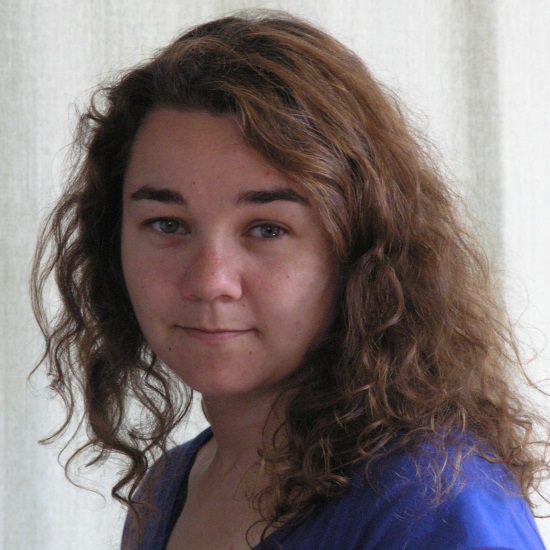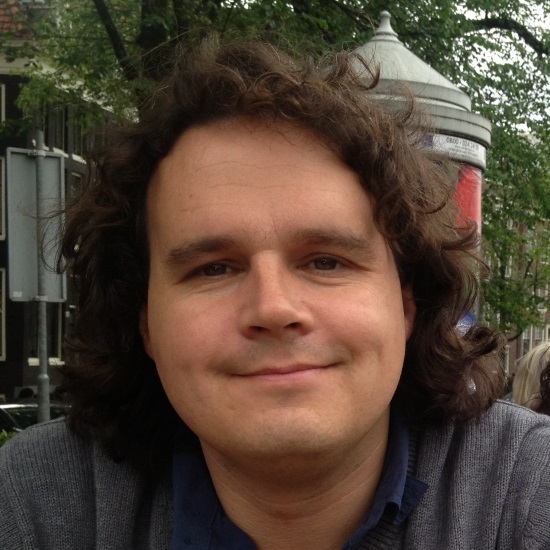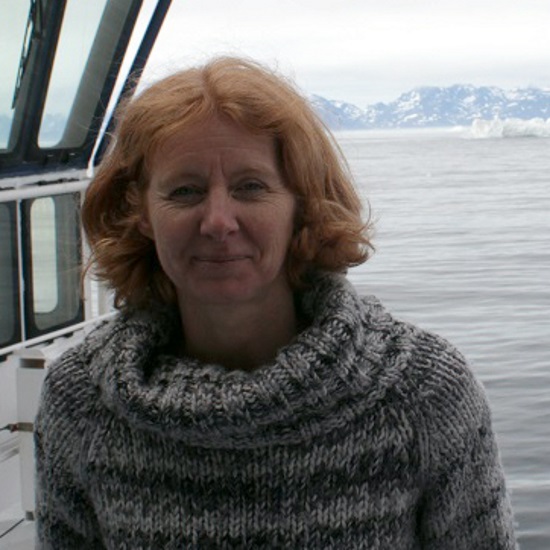Links to external sources may no longer work as intended. The content may not represent the latest thinking in this area or the Society’s current position on the topic.
Quantifying fluxes and processes in trace-metal cycling at ocean boundaries
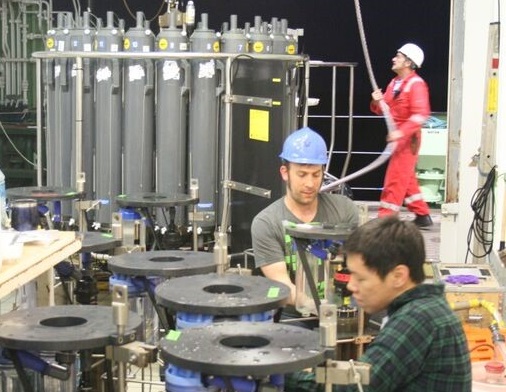
Satellite meeting organised by Professor Gideon Henderson FRS, Professor Ed Boyle, Professor Maeve Lohan, Dr Micha Rijkenberg and Dr Géraldine Sarthou.
This workshop will assess the state of understanding of trace metal fluxes at the four ocean boundaries: continents, marine sediments, the atmosphere, and mid-ocean-ridges. It will seek to quantify fluxes for key trace elements, and describe as fully as possible the processes that control them, so that changes to these fluxes in the past and future can be predicted. It will also identify areas where fluxes remain uncertain, or tracers disagree, and prioritise areas for future research.
There will two sessions of breakout groups. Both sessions will be based around the four ocean boundaries. Attendees will be pre-assigned to groups based on their input before the meeting, with many changing groups between the two sessions. Discussion will be summarised in a paper for each of the four boundaries.
Biographies and abstracts are available below, together with the schedule of talks. Alternatively you can download the draft programme (PDF).
Attending this event
This meeting has already taken place.
This meeting was preceded by a two-day discussion meeting Biological and climatic impacts of ocean trace element chemistry held at the Royal Society, London.
Enquiries: Contact the events team
Organisers
Schedule
| 09:15 - 10:00 |
Mid-ocean ridges and hydrothermal fluxes
Fluxes of heat and water at mid-ocean ridges are partitioned between focussed and diffuse flow along mid-ocean ridge axes and through the flanks of mid-ocean ridges. While the axial heat and volume fluxes are a small proportion of the whole, geophysically, they are of particular interest to marine geochemistry for two reasons. First, it is only at high temperature vents that a number of TEIs are mobilised into solution and, hence, can be released into the ocean interior. Second, the turbulent mixing processes active in deep sea hydrothermal plumes are so extensive, it has been estimated that the residence time for the entire deep ocean volume with respect to entrainment into hydrothermal plumes may be directly comparable to the timescales for thermohaline circulation. Thus, the possibility arises that processes associated with deep sea hydrothermal venting might impact upon global scale biogeochemical budgets. My talk will discuss these possibilities, with particular reference to Fe, an essential micronutrient, which is approximately 1 million fold enriched in hydrothermal fluids compared to deep ocean seawater. The presentation will draw upon the latest finding from two directly relevant programmes – SCOR Working Group 135 and the US GEOTRACES East Pacific Zonal Transect. 
Dr Christopher R German MBE, Woods Hole Oceanographic Institution, USA

Dr Christopher R German MBE, Woods Hole Oceanographic Institution, USAChristopher German received his BA in 1984, his PhD in 1988 and his ScD in 2007 – all from the Department of Earth Sciences, Cambridge. Following a NATO Post-Doctoral Fellowship at MIT (1988-1990) he returned to the UK (IOS Deacon Laboratory, Southampton Oceanography Center) before returning to the US as Chief Scientist for the National Deep Submergence Facility. From 2005-2014, he oversaw the biggest overhaul of DSV Alvin in its >50 year history and pioneered the use of deep diving AUVs for seafloor exploration. His most recent projects have included development of the Nereus Under Ice vehicle, including Arctic expeditions in 2014 and 2016, and working with NASA to develop their Ocean Worlds program. He previously served as President of the Challenger Society and Co-Chair of both InterRidge and CoML’s ChEss program. He was honoured with an MBE in 2002, a Humboldt Prize in 2014, and was elected Fellow of The Explorers Club in 2015. |
|---|---|
| 10:00 - 10:45 |
Discerning the mechanisms and measuring the rates of trace metal release from ocean sediments
All seafloor sediments undergo diagenetic reactions with the potential to mobilise constituent metals and promote the release of biologically essential trace metal micronutrients to the ocean. Quantifying this input and understanding how it changes are vital goals for simulating past and future ocean conditions. In this talk, I will explain the need to discern the mechanisms responsible for the release of trace metals to the ocean, in addition to measuring the rates of these processes, to effectively parameterise models of ocean primary production and climate. I will present the enduring evidence and our empirical basis for incorporating sedimentary iron (Fe) fluxes into ocean biogeochemical models, followed by recent evidence for additional processes that govern the release of Fe from sediments – processes which are presently ill quantified and unaccounted for. The challenges outlined for benthic Fe flux quantification concern other bio-essential trace metals too, such as manganese (Mn), nickel (Ni), copper (Cu) and zinc (Zn). Pore water profiles provide a first-order perspective to evaluate flux, while more intensive micronutrient and chemical tracer observations through the ocean’s bottom boundary layer might yield a better measure of the net flux to link with ocean transect data. In any case, without mechanistic knowledge of trace metal mobilisation and transfer to the ocean, a more accurate representation and projection of these inputs in ocean biogeochemical models is a difficult task. To this end, GEOTRACES-linked process studies are now emerging, and promise to bring exciting new knowledge and opportunities in these areas. 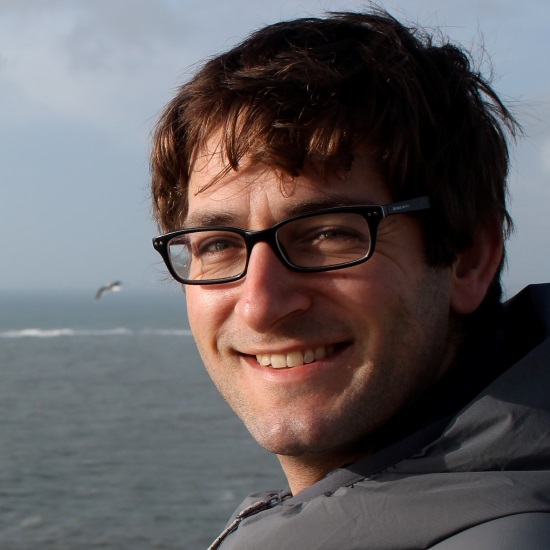
Dr Will Homoky, University of Oxford, UK

Dr Will Homoky, University of Oxford, UKWill Homoky is a geochemist measuring the natural variability of iron and other ‘trace’ metals released from ocean sediments – seeking the mechanisms and rates that sustain ocean life and thereby moderate Earth’s climate. His interests span the entire ocean floor, from shallow coasts to deep basins and underwater volcanic realms, with a view to learning what drives trace metal supply variations. Will led the sediment sampling activities for UK GEOTRACES in the South Atlantic Ocean. He is now a NERC Independent Research Fellow at the University of Oxford, developing technology to improve the quantification of trace metal release from the Ocean’s bottom boundary. |
| 11:15 - 12:00 |
Fluxes across the continental shelf
Continental shelves are a highly productive part of the oceans, playing a key role for both marine life and human activities. We know that they can easily be affected by a changing climate. They are also a particularly challenging system in marine trace element chemistry. The shelves are very strong sources for trace elements due to river runoff, dry deposition, submarine groundwater discharge (SGD), pore water fluxes, redox and salinity gradients, bioirrigation, and many other processes. These source terms, some of them extremely variable in space and time, are encountered by nearly equally strong and variable sink terms, like bioproductivity, precipitation reactions or fishing, just to name a few. The net flux is therefore a difference of two very large and variable terms, resulting in large uncertainties. In addition, discussing and quantifying individual parts of this budget is often problematic due to slightly different uses of terminology: is advective pore water flux the same as SGD? What are point sources, what are diffuse sources (and where does SGD stand here)? Where do you draw a boundary between suspended particle transport and sediment transport? This talk will aim to highlight a few of the main sources and sinks, uncertainties in their determination and challenges, as well as identifying areas where a closer look at definitions might help to improve our understanding of fluxes across the continental shelf. 
Dr Walter Geibert, Alfred Wegener Institute, Germany

Dr Walter Geibert, Alfred Wegener Institute, GermanyWalter Geibert is a marine biogeochemist, who uses naturally occurring radionuclides as tracers in the ocean. With a regional focus on the Southern Ocean and European shelf areas, he uses these tracers to study the exchange between the solid Earth and the ocean, in present and past. After studying geosciences in Trier and Bremen, Germany and completing his PhD in 2000, he pursued research projects in the Southern Ocean, and established new analytical techniques at the Alfred Wegener Institute (AWI) for Polar and Marine Research in Bremerhaven, Germany. In 2007, he moved to the University of Edinburgh and the Scottish Association for Marine Science (Oban, UK). He returned to the AWI in March 2015, where he is now head of the radiogeochemistry group. Since January 2015, he serves in the Standards and Intercalibration Committee of the International GEOTRACES programme, supporting the cross-validation of radionuclide analyses in order to obtain a globally consistent dataset. |
| 12:00 - 12:45 |
Isotope tracing of boundary fluxes
There is huge scope in using stable and radiogenic isotope systems to trace and quantify elemental fluxes to and from the ocean. The use of Nd isotopes as a sedimentary source tracer is well known, while new precise measurements of Pb isotopes in seawater reveal the changing contributions of Pb from natural and anthropogenic dust sources (Bridgestock et al., 2015). Increasingly, the spotlight has shifted towards the information recorded by stable metal isotope systems, like Fe and Zn. The dissolved isotopic composition of Fe in the Atlantic has been used to differentiate four iron sources to this basin, with the aerosol dust signature of Sub-Saharan Africa calculated to be of particular significance (Conway & John, 2012). Quantifying oceanic Fe sources is driven by its importance as a (co-)limiting micronutrient. Zinc may be of similar importance to Fe in controlling the efficiency of global carbon cycling, but behaves rather differently in the oceanic realm, and less is known about its oceanic cycle. New data will be presented, highlighting the importance of an output of light Zn isotopes to organic-rich continental margin sediments to the global mass balance of Zn. 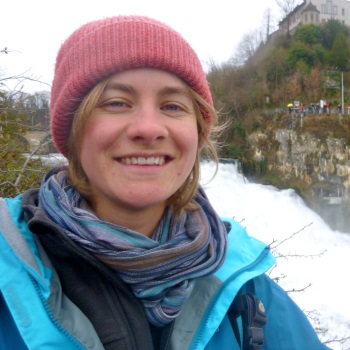
Dr Susan Little, Imperial College London, UK

Dr Susan Little, Imperial College London, UKSusan Little studied Natural Sciences at the University of Cambridge before completing a PhD in isotope geochemistry in 2013 at the School of Earth Sciences, University of Bristol. Susan then spent two years as a postdoctoral researcher in the Institute for Geochemistry and Petrology at ETH Zürich. She is currently a Leverhulme postdoctoral research fellow at the Department of Earth Science and Engineering, Imperial College London, where she is working on deep sea corals. More generally, Susan has and continues to work on the development of metal stable isotope systems as tracers for processes in the modern and past oceans. |
| 14:00 - 14:45 |
Challenges in modelling boundary fluxes and in situ reaction rates
Observations of the distributions of trace elements and isotopes (TEIs) in the ocean have been used to infer boundary fluxes and in situ reaction rates. Because the distributions of reactive (non-conservative) properties depend on both physical transport as well as in situ biogeochemical processes, diagnosing the former from the distributions of conservative TEIs (whether they be transient or radioactive) can lead to estimates of the unknown boundary fluxes and in situ reaction rates. Such an approach has been used in the past to obtain relatively robust first order estimates, but some care should be exercised in recognising its limitations. I present a simple example of this. The challenges in this approach may be divided into two categories (1) Sampling adequacy: is the spatial-temporal coverage internally sufficient to resolve the relevant scales and the end-member concentrations? Have the correct properties been measured and to adequate accuracy? (2) Model competence: does the model (whether diagnostic or prognostic) incorporate the appropriate physical mechanics? Have the biogeochemical processes been correctly parameterised? The first challenge is a function of experiment design, which is in turn governed by cost and logistics. In reality, for GEOTRACES the die is cast so it becomes a question of tailoring objectives to the observations at hand. The second challenge raises an important synthesis strategy for GEOTRACES: making sure that geochemists and physicists work together to make the most of this exciting dataset. 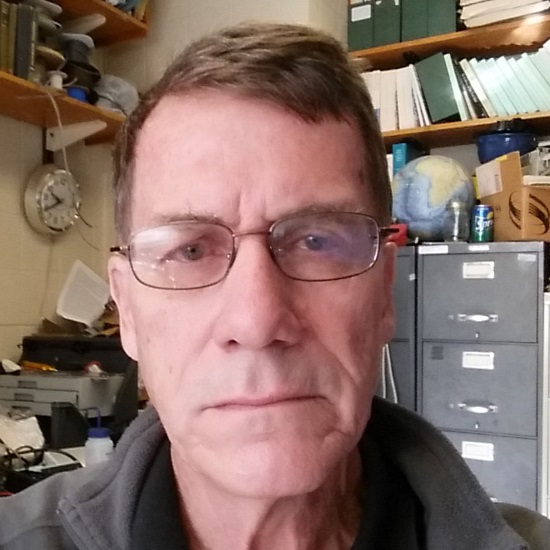
Dr William Jenkins, Woods Hole Oceanographic Institution, USA

Dr William Jenkins, Woods Hole Oceanographic Institution, USAWilliam Jenkins’s research is focused on the use of transient and radioactive tracers to measure large scale ocean circulation, ventilation and mixing, as well as the in situ rates of chemical and biological processes in the water column. Jenkins has also used these tools, along with dissolved noble gas and helium isotope distributions to determine fluxes at ocean interfaces, in particular air-sea exchange, ocean-cryosphere interaction, and hydrothermal processes. Since receiving a PhD in nuclear physics from McMaster University, Canada in 1974, Jenkins has been a member of the department of Marine Chemistry and Geochemistry at the Woods Hole Oceanographic Institution, except for a 4 year period as Professor of Marine Chemistry at the University of Southampton, UK. From 2005 to 2015 Jenkins also served as Director of the (US) National Ocean Sciences Accelerator Mass Spectrometry Facility. |
Chair

Dr Alex Baker, University of East Anglia, UK

Dr Alex Baker, University of East Anglia, UK
Alex Baker is a Reader in Marine and Atmospheric Chemistry at the School of Environmental Sciences, University of East Anglia, UK. He has a PhD in Marine Chemistry from the University of Southampton and has been working on chemical exchange at the air-sea boundary for the last 18 years. Major themes of Alex’s research include characterisation and quantification of atmospheric nutrient supply to the ocean, and investigation of the factors that control the solubility of aerosol iron and other trace metals.

Dr Phoebe Lam, University of California, Santa Cruz, USA

Dr Phoebe Lam, University of California, Santa Cruz, USA
Phoebe Lam is an Assistant Professor in the Ocean Sciences department at the University of California, Santa Cruz, USA. Prior to this, she was an Associate Scientist in the Marine Chemistry and Geochemistry department at the Woods Hole Oceanographic Institution. She received a PhD from the University of California, Berkeley in Earth and Planetary Science, a MA from Princeton University in Geosciences, and a S.B. from MIT in Environmental Engineering Science. She is a chemical oceanographer specialising in the biogeochemical cycling of elements mediated by marine particles, and has been actively involved in the international and US GEOTRACES programme.

Dr Silke Severmann, Rutgers University, New Jersey, USA

Dr Silke Severmann, Rutgers University, New Jersey, USA
Silke Severmann is a sediment biogeochemist at Rutgers University in New Jersey, USA. Her primary research interests are early diagenetic processes in marine sediments as drivers of the exchange between the sediment and the water column. Furthermore, she studies how geochemical proxies are formed and preserved, and how they can be read and interpreted. With sediments forming the link between the modern ocean and the geological record, Dr Severmann has keenly followed the progress of the GEOTRACES program, but is equally at home in sedimentary rocks that speak of ancient oceans. Her particular interest is in the biogeochemical cycling of iron, and in the environmental controls that regulate the flux of this important micronutrient to the ocean. Her primary research tool to trace processes in the water column and sediments are the stable isotopes of transition metals.
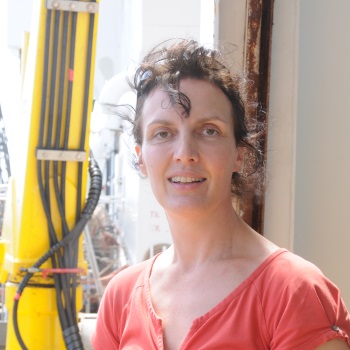
Professor Rachel Mills, University of Southampton, UK

Professor Rachel Mills, University of Southampton, UK
Professor Rachel Mills is Head of Ocean and Earth Science, at the University of Southampton based at the National Oceanography Centre Southampton. She is an ocean chemist who combines shipboard observations and deep sea sampling with laboratory experimental approaches to decipher the processes that control the supply and fate of trace metals in the ocean. Rachel has a long term interest in hydrothermal systems, the formation of mineral deposits at the seafloor and the leakage of trace metals to the ocean interior. She has used hydrothermal sediment and pore water geochemistry to infer a range of ocean processes including ocean ventilation over the late Pleistocene, low-temperature hydrothermal circulation through young ocean crust and estimation of the impact of microbial processes on mineralisation at the seafloor.
| 11:00 - 11:30 |
Lessons from SOLAS programme
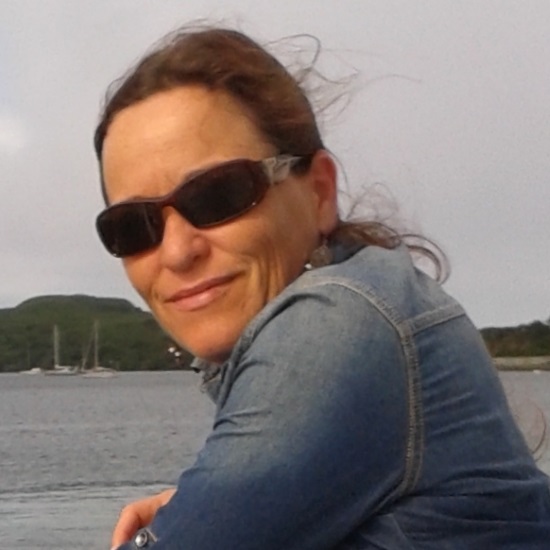
Dr Cecile Guieu, Laboratoire d'Océanographie de Villefranche-sur-Mer, CNRS-University Paris VI, France

Dr Cecile Guieu, Laboratoire d'Océanographie de Villefranche-sur-Mer, CNRS-University Paris VI, FranceCecile Guieu is senior scientist at CNRS, Laboratoire d’Oceanography de Villefranche (LOV). She is a Marine Biogeochemist. Her research interests concern atmospheric inputs of nutrients (including iron) and particles in the ocean and how they impact marine biogeochemical cycles and carbon export, in particular in the oligotrophic ocean. She shares her research activities between experimental and field work. She developed the large clean pelagic mesocosms that have been used in the frame of the DUNE project to study the impact of dust deposition on oligotrophic environment. Cecile Guieu has been a member of the SOLAS Scientific Steering Committee since 2009 and was actively involved in the preparation of the new Solas Science Plan. She has published 65 papers in peer-review journals. |
|---|---|
| 11:30 - 12:00 |
River input to seawater – lessons from the Global Rivers Observatory

Dr Bernhard Peuker-Ehrenbrink, Woods Hole Oceanographic Institution, USA

Dr Bernhard Peuker-Ehrenbrink, Woods Hole Oceanographic Institution, USABernhard Peucker-Ehrenbrink co-leads the Global Rivers Observatory (www.globalrivers.org), an international, collaborative research and education programme aimed at making time-series observations on the biogeochemistry of important river systems. The observing network currently includes stations on the Mississippi (http://162.209.109.171/), Columbia, Fraser, Yukon, Mackenzie, Ob, Yenisei, Lena, Kolyma, Ganges, Danube, Congo and Amazon rivers, and hopefully soon the Mekong River. The programme aims to answer fundamental research questions concerning the functioning of river ecosystems and their impact on ocean chemistry. Dr Peucker-Ehrenbrink is a Senior Scientist and J. Seward Johnson Chair in Oceanography at the Woods Hole Oceanographic Institution in Massachusetts. A native of Germany, he holds a doctorate degree in the fields of Geology and Geochemistry from the Johannes-Gutenberg University and the Max-Planck Institute of Chemistry in Mainz, Germany. His research ranges from the accretion of extra-terrestrial matter on Earth, the chemical evolution of seawater, to the biogeochemistry of river systems. |
Chair
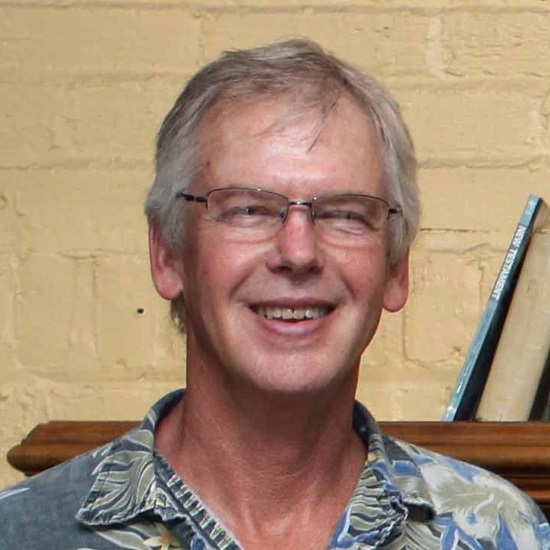
Professor Bill Landing, Florida State University, USA

Professor Bill Landing, Florida State University, USA
William Landing has earned degrees in Chemistry (UC Santa Cruz, BS, 1975 and PhD 1983) and Chemical Oceanography (University of Washington, MS, 1978). He studied river chemistry in California and the aquatic speciation of trace elements in Swedish and Norwegian fjords during two post-doctoral appointments. He joined the faculty in the Department of Oceanography at Florida State University in 1985. He is currently a full professor in the new Department of Earth, Ocean, and Atmospheric Science, formed in 2010 via merger of the departments of Oceanography, Geological Sciences, and Meteorology. His research interests include the biogeochemistry of trace elements in marine and fresh waters with emphasis on the effects of biological and inorganic processes on dissolved-particulate fractionation, solution speciation, and redox chemistry; the development of analytical schemes for studies of trace element concentrations, equilibrium complexes and redox states in natural waters and the atmosphere; the chemistry and deposition of atmospheric aerosols and precipitation, and mercury cycling in the atmospheric and in aquatic environments.
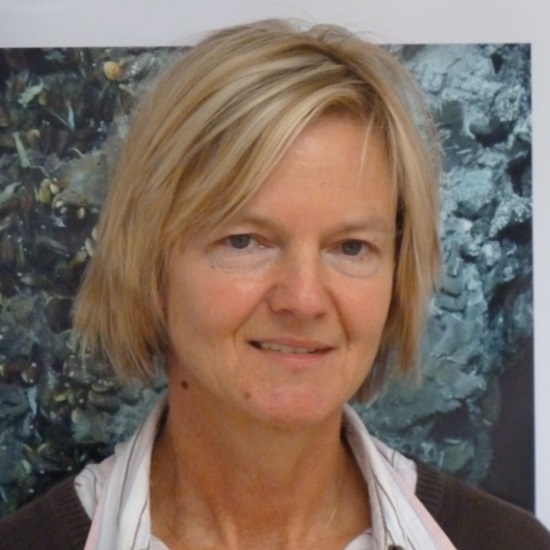
Professor Andrea Koschinsky, Germany

Professor Andrea Koschinsky, Germany
Andrea Koschinsky’s general research focus is the biogeochemistry and chemical speciation of trace metals in different marine systems. Being a chemist by studies, she did her PhD at the Free University of Berlin in marine geochemistry, working on the formation mechanisms and metal associations of ferromanganese crusts. During her post-doc she worked on different marine research projects with a major focus on environmental consequences of a future manganese nodules mining. In 2002 she finished her habilitation in Geochemistry at the Free University Berlin. Since 1998 her second major focus has become the investigation of hydrothermal fluids, their interactions with the biosphere, and hydrothermal metal fluxes into the ocean. Her activities within the GEOTRACES program refer to input and cycling of special transition metals in the ocean. Since 2003 Andrea Koschinsky has been Professor of Geoscience in the Department of Physics and Earth Sciences at Jacobs University Bremen.
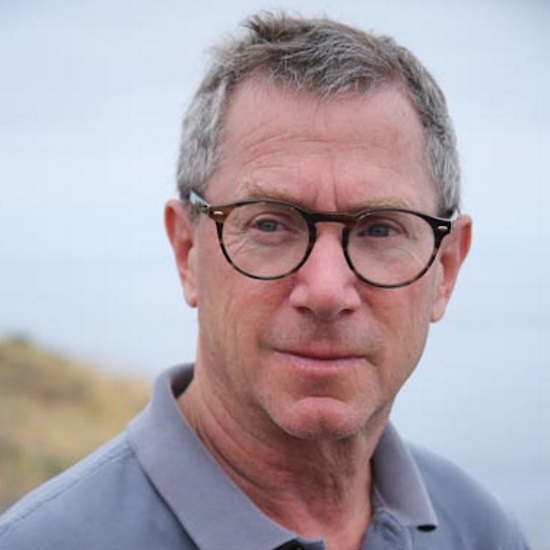
Professor William Berelson, University of Southern California, USA

Professor William Berelson, University of Southern California, USA
Berelson is a biogeochemist who’s work focuses on the fate of biogenic material with respect to export from the upper ocean, sinking, deposition and diagenesis on the sea floor. His work on benthic fluxes includes the use of a free-vehicle lander in which robotic emplacement of a set of chambers provides a means of determining chemical fluxes at water depths from 1-5000 m. He, and others, have determined trace metal fluxes from shelf and slope sediments. Among his recent projects is a study of the kinetic controls on calcium carbonate dissolution, both in the lab and ocean and the response of carbonate to ocean acidification. He has authored over 100 journal articles and is presently Chairman of the Department of Earth Sciences at USC.



